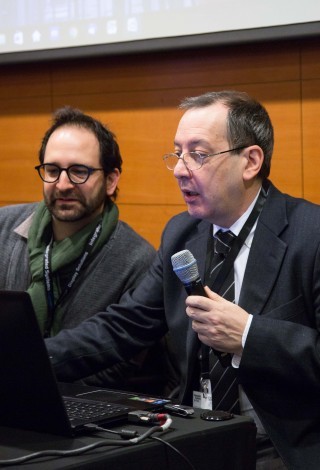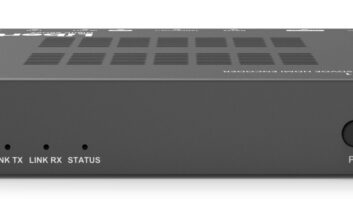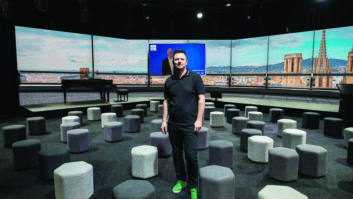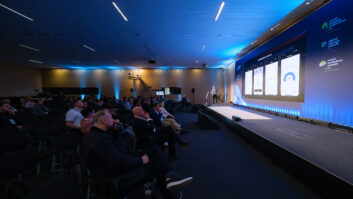
Common audio myths and misunderstandings were dispelled, and the benefits of line arrays and FIR filters revealed, at the Audio Forum at ISE 2016 yesterday. The full day event, organised by media partner Connessioni, was introduced and moderated by professional audio system designer Guido Diamanti, who also delivered a presentation on electroacoustic problems and solutions for line arrays.
“With the possibility to implement FIR filters in the processors of the system, [the line array] increases the ability to model the emission of the sound more precisely.”
Diamanti however argued that line arrays were not always the best solution for every environment − point source speakers sometimes proved to be of greater benefit − and installations had to be approached on a project-by-project basis.
Diamanti was joined by Daniele Mochi, project consultant for K-array, who outlined the benefits of FIR filter optimisation to allow complex manipulation of the amplitude and the phase of each section of a line array. With FIR optimisation, it’s possible to get full control of sound, especially in live sound reinforcement, Mochi claimed, demonstrating the benefits such technology had brought to his company’s line array products.
Switching to a topic concerning small rooms, Donato Masci, an acoustic designer and consultant at Florence-based Studio Sound Service, discussed passive acoustic treatment and low frequency absorption. He also offered to debunk some of the views and beliefs about acoustic treatment
he has encountered during his studio design career. No, panels or tube-traps aren’t enough to make for a good mixing room, said Masci. “To make efficient full range acoustic correction, a large quantity of absorption is required to handle low frequencies. The depth of premade mobile acoustic panels is simply not sufficient.”
Another myth is that auto-calibration is useless if the studio (or home) room already has good acoustic treatment. Not true, said Masci, as such systems work very well for fine-tuning the minimum-phase low frequency boost, as well as helping to control reflections on the mixing desk.
A related belief was that rooms don’t need acoustic treatment if the engineer or installer has an auto-calibration system. Masci countered: “Auto-calibration systems are not able to solve all the acoustic problems of a room, because they are not able [by themselves] to manage some of the phenomena that create the problems. This type of calibration will never replace proper acoustic treatment.”







